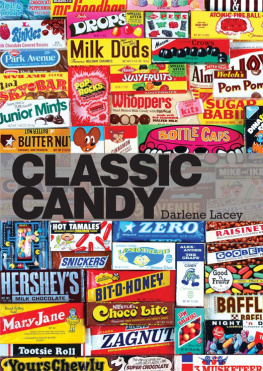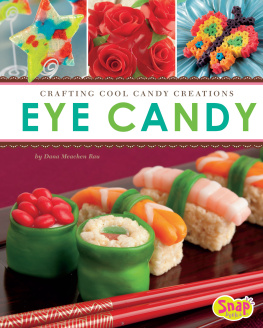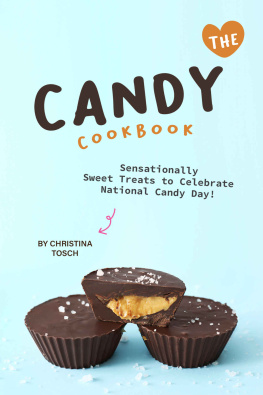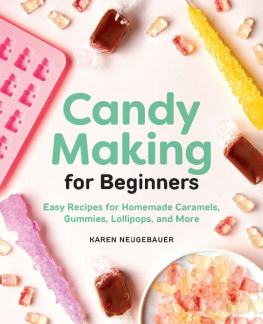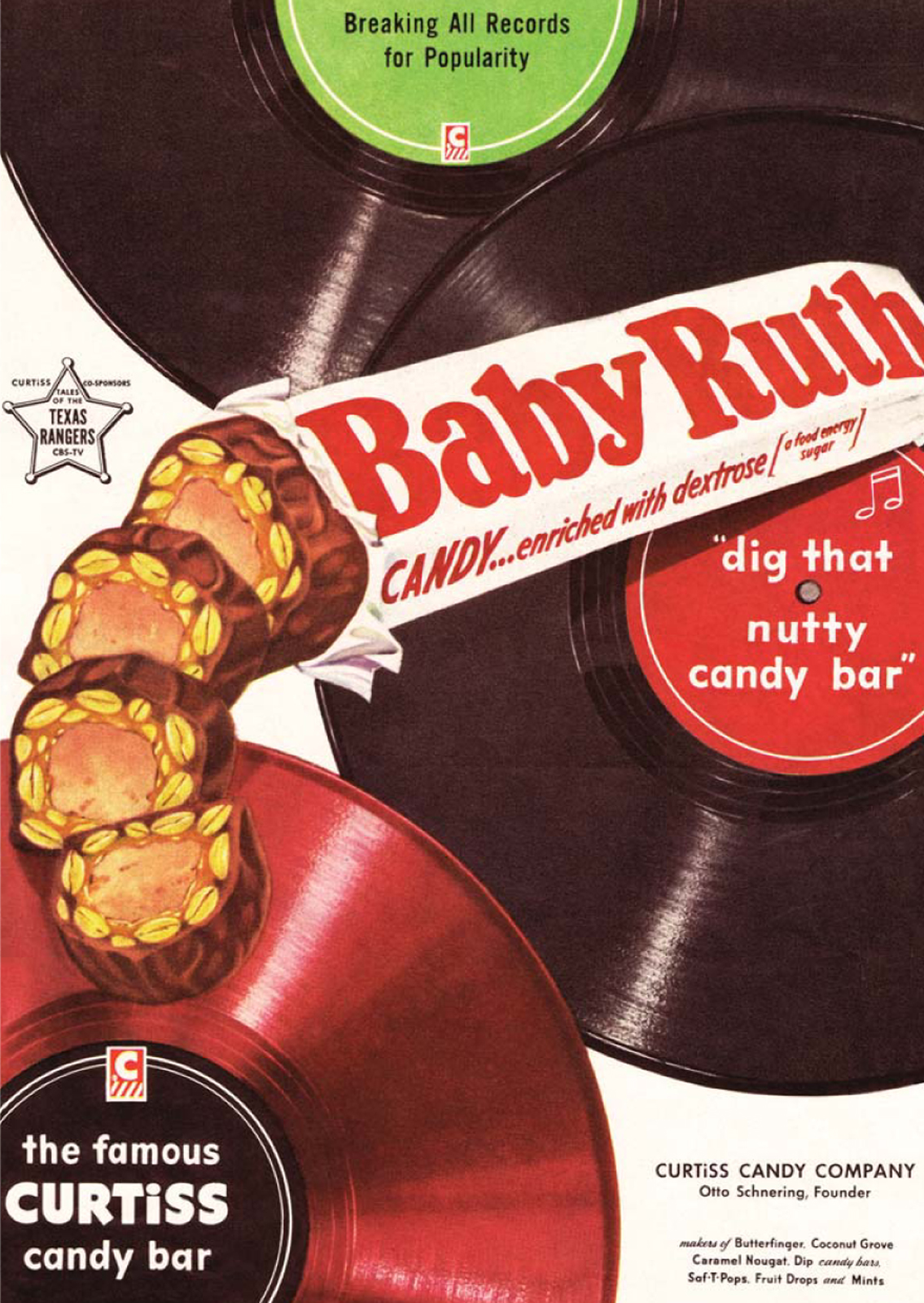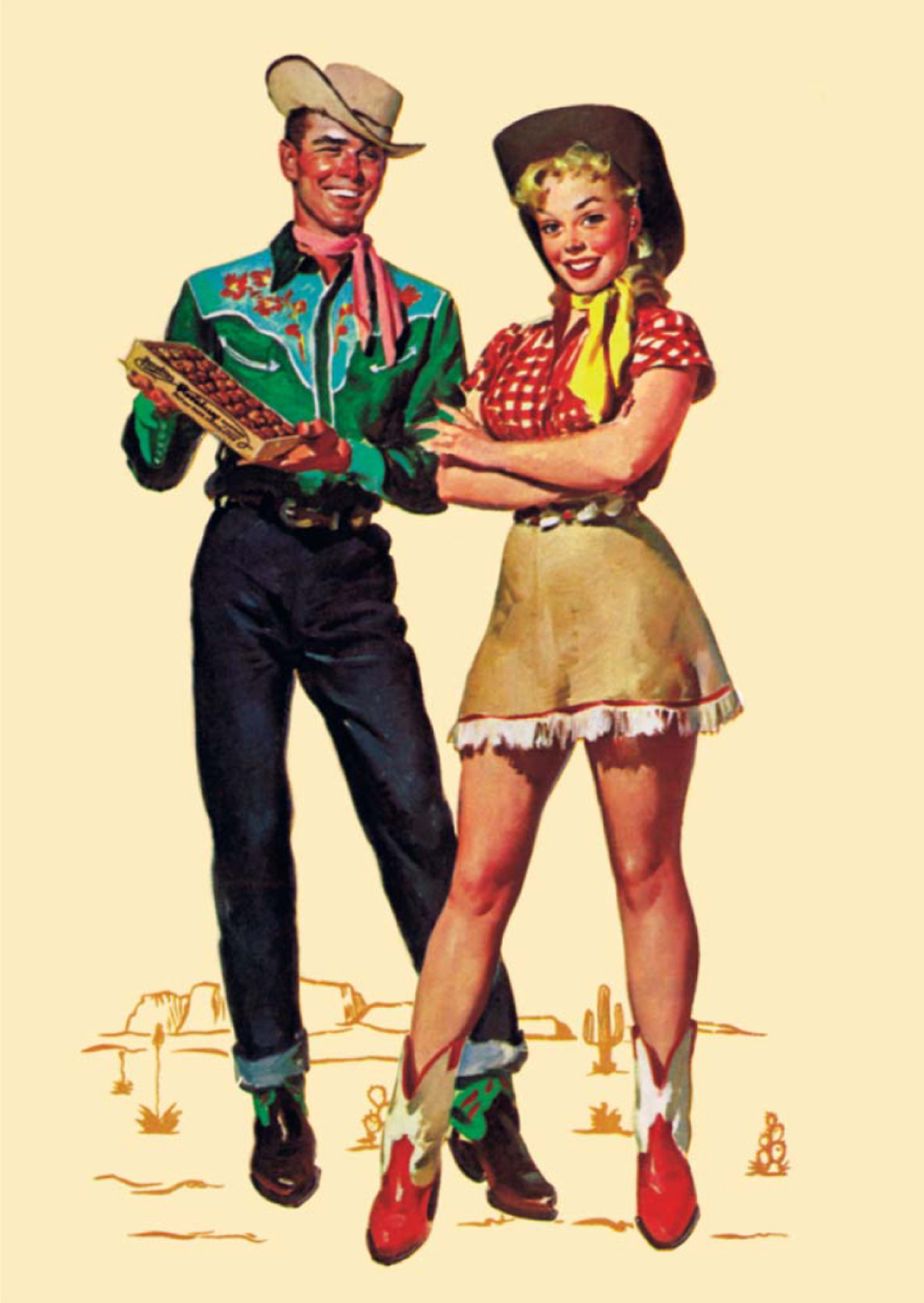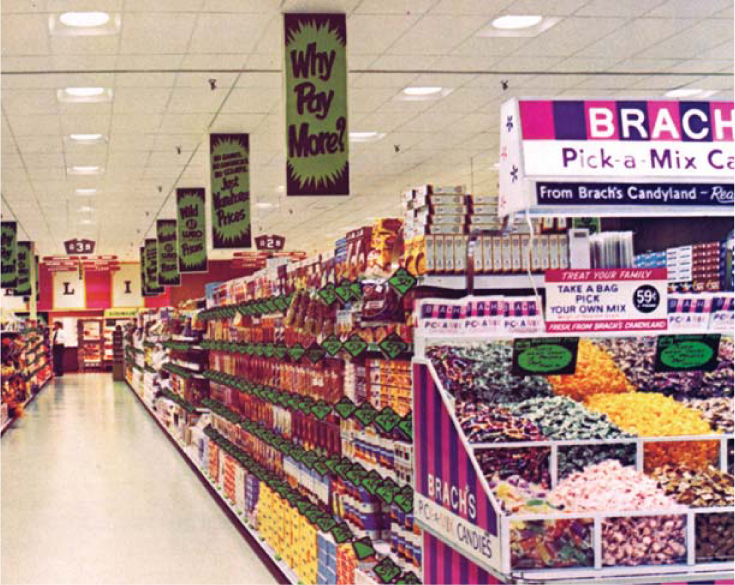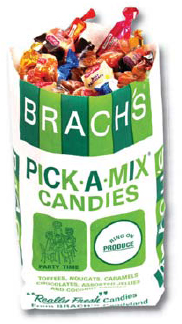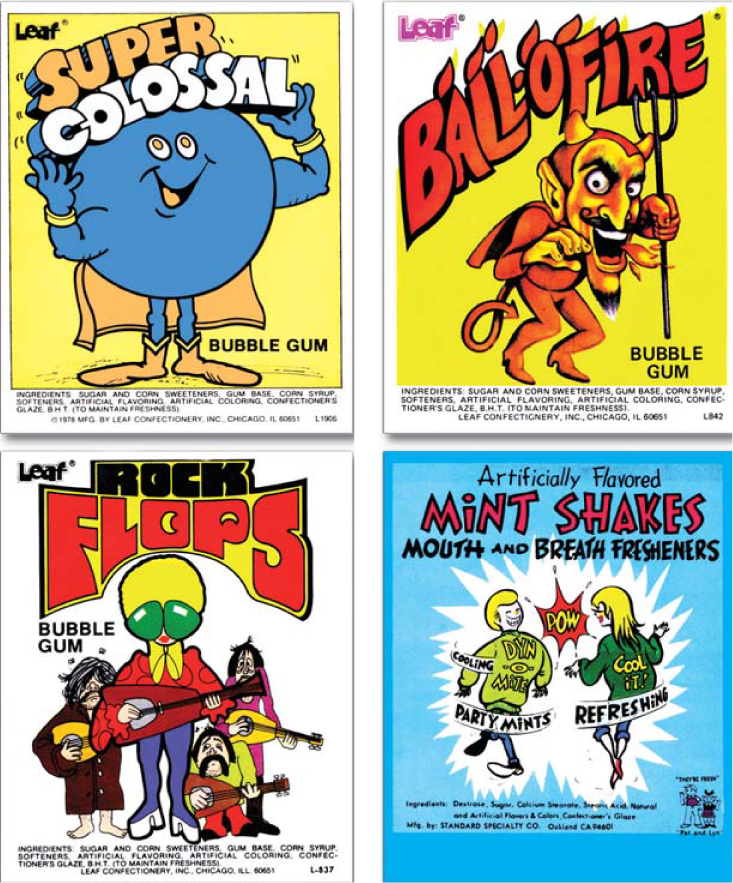CLASSIC CANDY
Darlene Lacey
A wholesome boy and girl enjoy candy bars in a Curtiss magazine ad from 1954.
SHIRE PUBLICATIONS
A 1950s box of Pangburns candy included an irreverent guide to teenage slang.
CONTENTS
A Curtiss ad aimed at youth culture from a 1958 edition of American Girl magazine.
INTRODUCTION
T HERE IS SOMETHING irresistibly charming about American candy from the 1950s through the 1980s. The candy industry was at its peak in terms of variety, inventiveness, and ability to elicit great nostalgia to this day from those who enjoyed it. With families reunited and settling down after World War II and children springing up everywhere, the creative minds in America responded with a burst of sweet treats for people to eat.
There was seemingly no limit to the variety of candy, the availability of candy, and the fun-filled ways that candy was packaged and sold. Who could resist a Baffle Bar? Pop Rocks? A Purple Cow? A Baby Ruth ad proclaimed, Dig that nutty candy bar, and thats exactly what Americans did. Drugstores, dime stores, and drive-ins displayed tantalizing arrays of candy of all shapes, flavors, and sizes, colorfully wrapped and cheerfully named, beckoning people to make one their favorite. Should it be something some light? Something that lasted a long time? Something that burst in your mouth? Something that wouldnt melt in your hand? The choices went on and on.
During this period, the Big ThreeHershey, Mars, and Nestlevied to be number one while other big names of the timeTootsie, Peter Paul, Curtiss, Just Born, Ferrara Pan, Hollywood, and Heidelooked to carve out their share of the market. A multitude of candy bars appeared on the shelves and then disappeared after a fleeting moment in time, almost as if they were Top 40 records. Candy was a pop culture phenomenon that rarely took center stage in the media, but was always a supporting player in the American experience.
Over the decades, consolidation of the industry has caused some of these names to fade while others have grown stronger. Many favorite candies have vanished from the American scene, although many also remain. But the excitement and energy from this period no longer exists and may never return, making it a special time for Americans who fondly remember this golden age of classic candy.
Illustration by pinup artist Gil Elvgren on a 1950s Pangburns assorted chocolates box.
AMERICANA
N O MATTER where one lived or what one did in America during the decades between the 1950s and the 1980s, candy was within reach. Almost every type of retail business featured a candy counter or vending machine, and candy was even sold door to door.
Neighborhood drug store and dime store candy counters were commonplace back then. Five and dimes such as Woolworths, J. J. Newberrys, and Grants usually featured a lunch counter or soda fountain along with a candy counter, a convenience that began to fade by the 1960s due to the growing popularity of fast food chains.
One of the mainstays of the American candy counter was penny candy, which children would scrutinize for great lengths of time as they tried to get the most satisfaction out of their allowances. Popular penny candy included licorice whips, hard candy sticks, jawbreakers, bubblegum, root beer barrels, caramels, suckers, and peanut butter-flavored Mary Janes.
Larger drug stores and department stores had candy departments featuring boxed chocolate from Russell Stover, Bartons, Pangburns, and Schraffts. These stores also offered a more upscale selection of candy displayed in glass bins, ready to be scooped and weighed by smartly dressed clerks working the counter. One might buy bridge mix, malted milk balls, Swedish fish, chocolate stars, and M&Ms by the pound.
Newsstands, service stations, and convenience stores were especially well stocked with candy. By the 1970s, summertime for many American children meant enjoying a bag of candy along with a Slurpee or Icee frozen drink from the local 7-11, Circle K, or Stop-N-Go. Restaurants offered candy, gum, or mints at the counter, and penny and nickel vending machines stood by the doorways, dispensing gum or candy such as Boston Baked Beans, Chiclets, and Mike and Ikes by the handful.
Family-owned candy shops, with candy made on the premises, were commonplace during the early twentieth century. A few, such as Wittichs Candy Shop in Ohio and McCord Candies in Indiana, still operate, with very little having changed over the years, thus keeping the old-time experience alive.
A typical Brachs candy endcap display at a 1973 grocery store.
An assortment of Brachs Pick-a-Mix candy in a bag one would use at the store.
Some candy companies have grown into empires, most famously Hershey, Mars, Russell Stover, Tootsie Roll, Ghirardelli, and Necco. Many others also flourished, but were eventually purchased by larger food companies, causing their brand names to fade over time. These include Curtiss, Ward, Beichs, Holloway, Hollywood, Mason, Stark, and Toms. Others still continue under their original brand names: Just Born, Ferrara Pan, Hoffmans, Annabelles, Atkinsons, Jolly Rancher, Heide, Palmer, Bonomo, Boyer, Peter Paul, Pearsons, and Brachs. Some famous candy companies, such as Nestle and Pez, have international roots, but their products have become intrinsic to the American experience, and they have had manufacturing plants in America for so long that they are considered American.
Some candy companies retained a regional flair to their creations: Washington-based Brown & Haley with their mounded chocolate, peanut, and vanilla fondant Mountain Bar, Texas-based Pangburns with their pecan-chocolate Millionaires, and Idaho-based Owyhee with their cocoa-dusted marshmallow Idaho Spud Bar, designed to look like a potato.
Gumball machine art often featured bright, eye-catching illustrations appealing to American youth.
Another regional favorite stemmed from a highway oasis. For travelers on the road, Stuckeys provided a haven throughout the decades. Often found in remote locations along highways in the South, Stuckeys stores offered an oasis with gasoline, rest rooms, a snack bar, a gift store, and homemade candy featuring their famously sweet pecan log rolls and pecan divinity.
Family-run Stuckeys opened their first store in Eastman, Georgia, in 1937 and became a growing chain until the late 1970s, when their founder, W. S. Stuckey, died. The family sold the business to their partner, Pet Milk. Subsequently, Stuckeys languished and many stores closed. In 1985, the family bought back the business, and Stuckeys was able to make a comeback throughout the Southeast.

